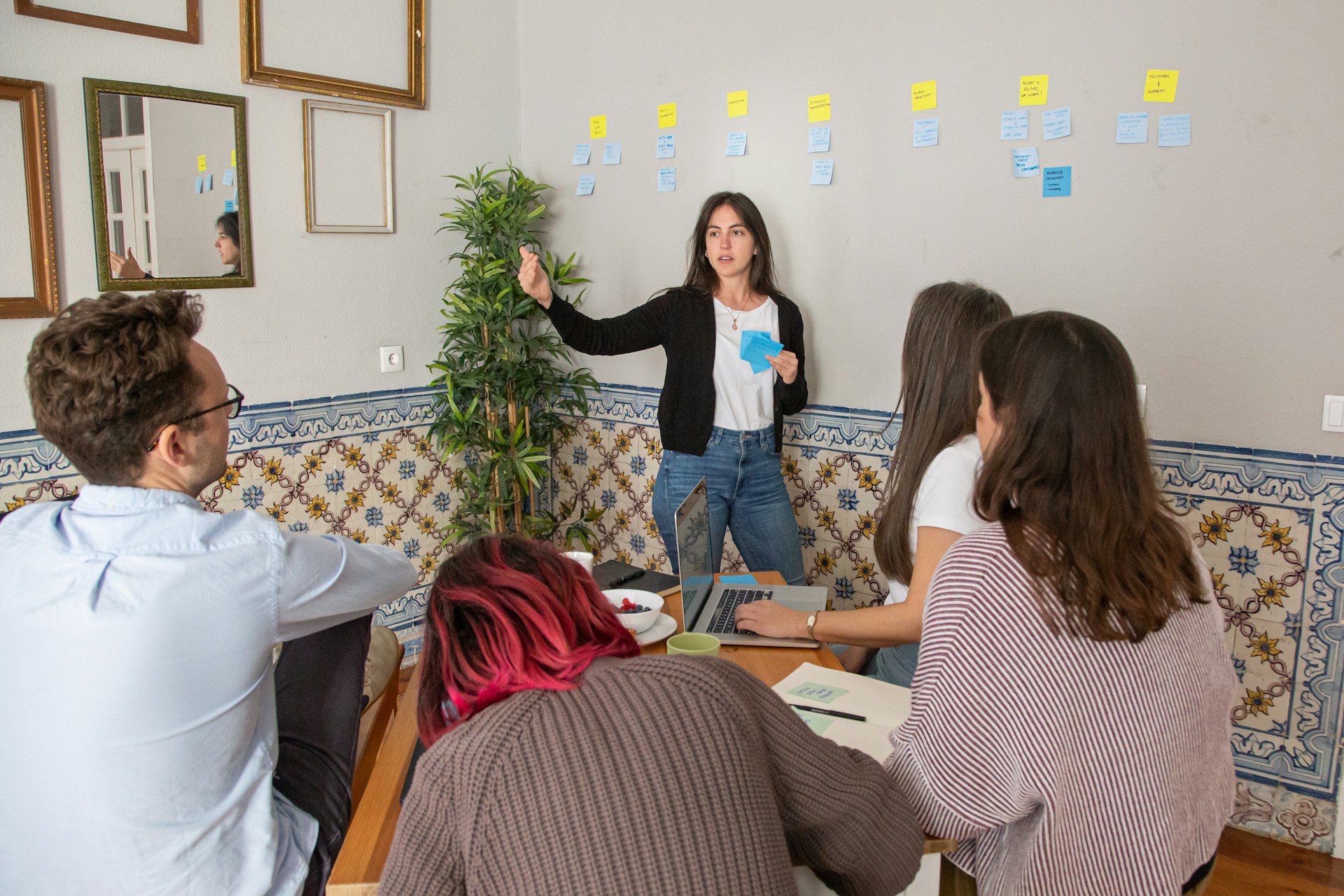Generativity vs. Stagnation: How To Increase Leadership Value and Contribution

Older Millennials, Gen X and Young Boomers who show signs of workplace complacency may need to feel needed in their personal or work lives. You see, individuals between the ages of 40 and 65 have reached a new psychosocial stage of development. At this stage, their contributions to the world become significant. And employers can foster their growth in a way that can benefit both the business and the individual.In this blog, we explain this stage of development. We’ll discuss the difference between generativity and stagnation, how they’re demonstrated in the office and how employers can cultivate a spirit of generativity.Let’s get started.
Definition: Generativity vs. Stagnation
Generativity is a stage at midlife in which a person demonstrates behaviours that contribute to society or add value to future generations. They do this without the expectation of receiving anything in return.Stagnation is the opposite of generativity. It refers to midlife behaviours that demonstrate complacency and apathy in career and psychosocial relationships.Generativity vs. stagnation is the seventh stage of Erik Erikson’s theory of psychosocial development.
Erikson’s Eight Stages of Psychosocial Development
Erik Erikson’s theory suggests personality develops in a predetermined manner between birth and death. According to Erikson, individuals experience situations in which their psychological needs conflict with the needs of society.How an individual’s needs are met impacts personality development in terms of a sense of competence or inadequacy. This, in turn, motivates their behaviours and actions.The eight stages are:
- Stage 1 – Infancy: Trust vs. mistrust
- Stage 2 – Toddlerhood: Autonomy vs shame and doubt
- Stage 3 – Early Childhood: Initiative vs guilt
- Stage 4 – Middle Childhood: Industry vs inferiority
- Stage 5 – Adolescence: Identity vs. confusion
- Stage 6 – Young Adulthood: Intimacy vs isolation
- Stage 7 – Middle Age: Generativity vs. stagnation
- Stage 8 – Maturity: Integrity vs. despair
Erikson’s Seventh Stage of Psychosocial Development
The seventh stage of psychosocial development takes place during middle age, or between the approximate ages of 40 and 64. During this stage, adults strive to make an impact on the world by contributing to society or adding value to younger generations. This stems from a desire to be useful, leave a legacy, make a difference or give back to society.Examples of generativity include raising children and developing and nurturing relationships. It can be expressed by mentoring others, volunteering or giving back to the community. Adults may express generativity through their creative or career accomplishments.
Benefits of Generativity
When an individual lives a purpose-filled life – by engaging in the outside world and forming meaningful connections – they develop a positive self-perception of their generativity. They believe their lives matter and that they are making an impact on the world.According to Psychology in Action, generativity benefits adults while benefiting others. Several studies reveal that how generative a person believes they are impacts their health.For example, adults who feel needed and useful may have:
- Lower levels of depression or anxiety
- Greater sense of happiness and satisfaction
- Improved health and wellbeing
- Lower risk for physical illness and disabilities
- Longer lives
Risks of Stagnation
If an adult fails to find a way to contribute, they experience stagnation or a sense of complacency.A person who is stagnant may show:
- A disconnection from community/society
- Unproductiveness
- A lack of self-improvement
- Self-centred behaviours
- Reciprocity (I’ll scratch your back if you scratch mine)
Generativity and Stagnation In the Workplace
Generativity has an enormous capacity to impact workplace and career outcomes. This is because the office is the ideal setting for mentoring and knowledge-sharing. Likewise, rewarding work and a sense of contribution create a feeling of accomplishment and fulfilment. And, it can increase a person’s productivity and growth.To be clear, it’s not reasonable for employers to anticipate generativity from new or young employees. Someone who is learning or mastering their trade - while juggling family responsibilities – will struggle with leadership and selflessness. Instead, businesses should seek and nurture generativity in middle-aged employees who have reached a high level of competence in their careers.
Benefits of Generativity in the Workplace
Generativity in the office can result in greater motivation, job autonomy and productivity. It can accelerate the desire to grow and take on increasingly challenging job demands. And it creates a sense of job accomplishment, fulfilment and career satisfaction. Employees increase their own gratification when they engage in mentorship programs. Mentorship helps them feel useful and may lead to career advancements, promotions and higher compensation.Businesses also benefit from nurturing a spirit of generativity and mentorship. Research suggests that 91% of employees who are mentored are satisfied in their jobs. Mentored employees feel more positively about their employers and are less likely to quit. Retention rates for mentored employees are 50% higher than those who aren’t mentored.
Risks of Stagnation in the Workplace
On the flip side, a stagnation mindset in adult workers can be damaging to businesses. It can result in chronic complacency, unproductiveness, high turnover and career paralysis.Example of stagnation in the office include:
- Lack of collaboration
- Inability or lack of desire to grow
- Lack of production
- Confrontation or friction with team members or leadership
While it may be easy for employers to assume someone who shows signs of stagnation has failed to develop a generativity mindset, that may not always be the case.Remember, at each stage, an individual experiences situations in which their psychological needs conflict with the needs of society. How those needs are met impacts their development, which in turn motivates their behaviours. An employer can create the conflict and fail to provide a satisfactory resolution. Thus an employer can cause workplace stagnation.Career stagnation can result from:
- Employees focused on employer expectations
- Inadequate training
- Lack of performance feedback
- Lack of communication about how employees impact the business
- Rote tasks and duties
- Minimal professional development
- No career growth opportunities
Cultivate a Generative Mindset in the Workplace
The good news is that you can resolve career stagnation and cultivate a generative mindset in your place of business. Greater job autonomy, regular feedback, rewarding productivity and innovation are great places to start. Mentorship and career development programs can increase a sense of accomplishment, contribution and job satisfaction. In addition, employer-sponsored volunteer programs and community contributions can foster a spirit of giving.Leadership coaching can teach supervisors, managers, executives and other team leaders how to lead effectively. A strong coaching culture develops a generative mindset and benefits businesses with increased productivity, engagement and employee retention.CoachHub provides digital coaching services that empower average leaders to become great leaders. Our coaching services can train your leadership team to develop the attributes of great leaders and transform your organisation from within. Learn how our on-demand coaching can help.
FAQ
Yes, executive coaching plays a key role in retaining and engaging senior leaders by giving them space to reflect, grow, and lead with purpose. Through individualised support, executives strengthen communication, decision-making and resilience — all of which drive engagement and long-term satisfaction.
With CoachHub Executive™, organisations not only see improved leadership performance but also greater alignment, motivation and confidence among their top talent, resulting in higher retention and a stronger leadership pipeline.
CoachHub Executive™ goes beyond one-to-one sessions by integrating technology, measurable insights and continuous learning into every coaching journey. Each executive benefits from personalised matching with certified coaches and flexible session formats to reinforce development between sessions.
While traditional coaching often lacks scalability or measurable tracking, CoachHub ensures impact visibility through data-driven dashboards, 24/7 scheduling flexibility and a consistent, high-quality experience for leaders worldwide, that can be tailored to your organisation's goals.
Yes, executive coaching is delivered across 90 countries in 40+ languages, with localised coach networks that meet the cultural and business needs of global organisations.




.svg)


.svg)





.png)



.jpeg)